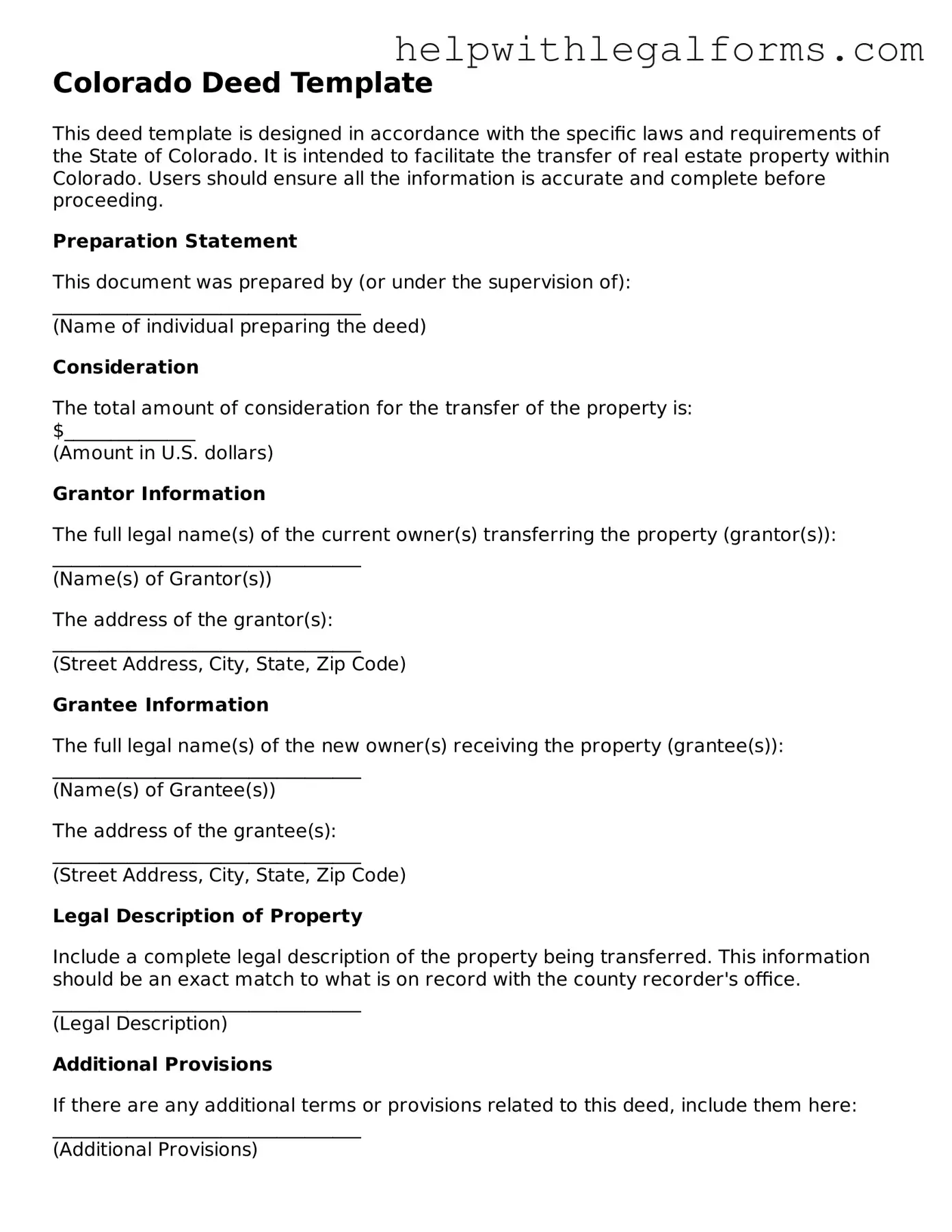Colorado Deed Template
This deed template is designed in accordance with the specific laws and requirements of the State of Colorado. It is intended to facilitate the transfer of real estate property within Colorado. Users should ensure all the information is accurate and complete before proceeding.
Preparation Statement
This document was prepared by (or under the supervision of):
_________________________________
(Name of individual preparing the deed)
Consideration
The total amount of consideration for the transfer of the property is:
$______________
(Amount in U.S. dollars)
Grantor Information
The full legal name(s) of the current owner(s) transferring the property (grantor(s)):
_________________________________
(Name(s) of Grantor(s))
The address of the grantor(s):
_________________________________
(Street Address, City, State, Zip Code)
Grantee Information
The full legal name(s) of the new owner(s) receiving the property (grantee(s)):
_________________________________
(Name(s) of Grantee(s))
The address of the grantee(s):
_________________________________
(Street Address, City, State, Zip Code)
Legal Description of Property
Include a complete legal description of the property being transferred. This information should be an exact match to what is on record with the county recorder's office.
_________________________________
(Legal Description)
Additional Provisions
If there are any additional terms or provisions related to this deed, include them here:
_________________________________
(Additional Provisions)
Signature Section
The grantor(s) must sign and date the deed in the presence of a notary public.
____________________________ ______________
Signature of Grantor Date
____________________________ ______________
Signature of Grantor Date
This document was acknowledged before me on ______________ (date) by _________________________ (name(s) of grantor(s)).
____________________________
Notary Public
My commission expires: ______________
Recording
After completion, this deed needs to be recorded with the County Recorder's Office in the county where the property is located to be effective and to provide public notice of the transfer.
